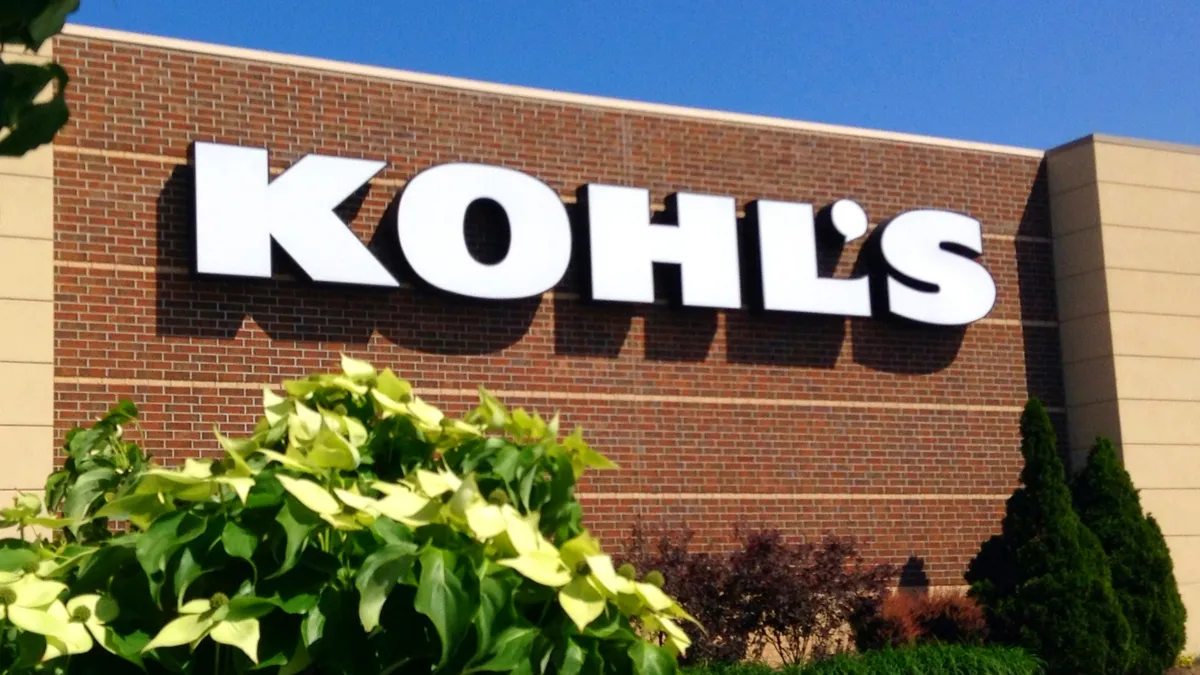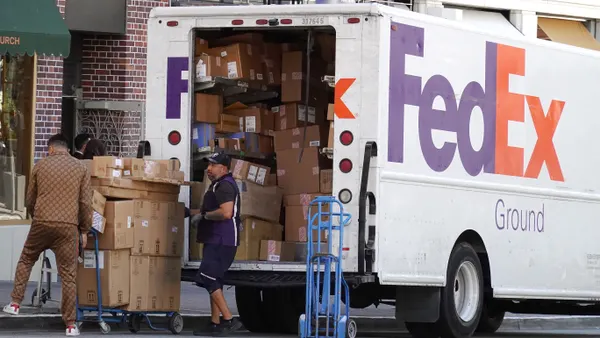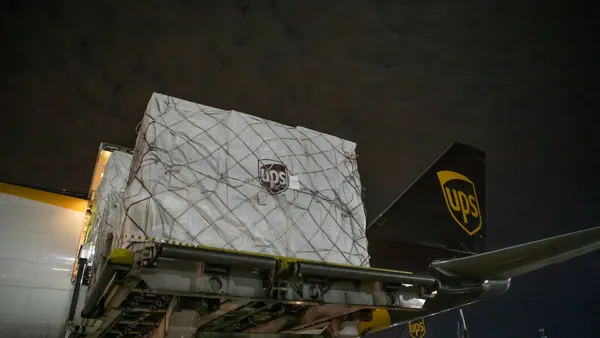This is Patent Pending. Supply chain-related patent applications are published every day and this is where we'll talk about the ones that could have the biggest impact on the supply chain and the ones that challenge the norm. We want to give you an idea of where supply chains are heading and what the industry is thinking. Read the previous issue here.
UPS delivery: We'll take your address and your location data

Signing for a delivery: it's the last step in the process, but it can be inconvenient for the logistics company and customer. The customer needs to schedule their day around a time window when the package might arrive so they can sign for it. And if the customer isn't home, the delivery company has to make multiple trips. "This represents an inefficient use of carrier resources," UPS wrote in a patent application published this week.
UPS already offers a couple of solutions to this problem, which include having parcels forwarded to a different location where someone can sign on the receiver's behalf or sending the package to a UPS customer center. But the logistics company outlines another solution in its patent application that can allow customers to provide the location of their vehicle or another place where the package can be delivered. It all hinges on consumers sharing quite a lot of information.
The patent application says customers who choose Mobile Delivery could share information from their car's GPS to determine its location. More location information shared through the customer's phone or social media accounts could also help facilitate a delivery.
When a parcel is being dropped off, the system will determine the customer's location and send them a notice with the original delivery location, but, with the proposed system, it could also provide alternate locations based on where the customer is or allow them to suggest other locations.
After determining an alternate delivery location, a customer would have a secure identification code sent to their phone to use at the time of delivery. The driver's route will then be changed in the dispatch plan.
UPS made waves a few years ago with its ORION (On-Road Integrated Optimization and Navigation) system, which helped find optimal routes for drivers. The system helped the carrier find a solution to an old and notoriously hard math problem: the traveling salesman problem, finding the most best route for a driver to take. By allowing routes to change dynamically, as UPS describes in this patent application, the carrier might be able to improve trips even more. It will just come down to the customer's willingness to share their data.
Read up:
- The last yard: The final logistics frontier
-
UPS CIO: Supply chain is now a 'technology-enabled business'
Walmart: Pickup is all about the customer

Curbside pickup has become increasingly important for retailers during the coronavirus pandemic as storefronts have shuttered and companies look for ways to continue to sell their merchandise. But the process often involves the customer having to get out of their car and check-in at a kiosk, which, you know, is such a hassle.
In a patent application published in June, Walmart outlines a system that would allow customers to stay in their car and show up at a time chosen by them, not the retailer.
"This enhances the user's experience by reducing the amount of time that a user must take for item order fulfillment," the patent reads
The system would communicate with the customer to notify them when an order is ready to be picked up, and the user would share information on estimated arrival time and license plate number. The retailer would then calculate a projected arrival time, which would be calculated using the location information from a user's phone or just the details provided by the customer.
After the projected arrival time is estimated, the system tells the distribution center to prepare the order. When the customer arrives at the area designated for curbside pickup it will be outfitted with cameras that can read the license plate and determine if it matches the plate number on any existing orders. Once the plate numbers are cross-referenced, the order is sent from the warehouse to the vehicle.













